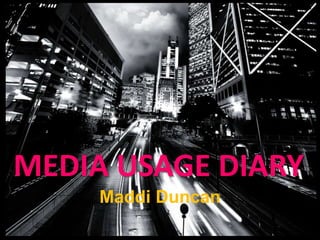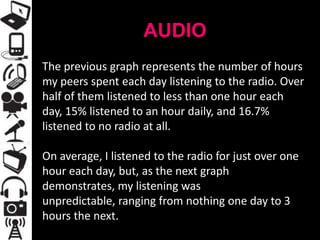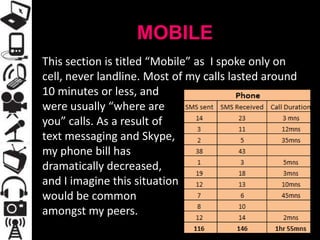The document is a media usage diary completed by Maddi Duncan over 10 days. It logs and analyzes the hours spent using and producing various media forms. It finds that Maddi spent the most time reading textbooks and books for pleasure. For news, Maddi prefers television but will read online if TV is unavailable. Maddi listens to less radio than peers due to personal music choices on devices like iPods. Maddi's internet usage is less than most peers and focused on Facebook, research, and web surfing rather than additional online activities. Maddi's television viewing averages under an hour per day.


























